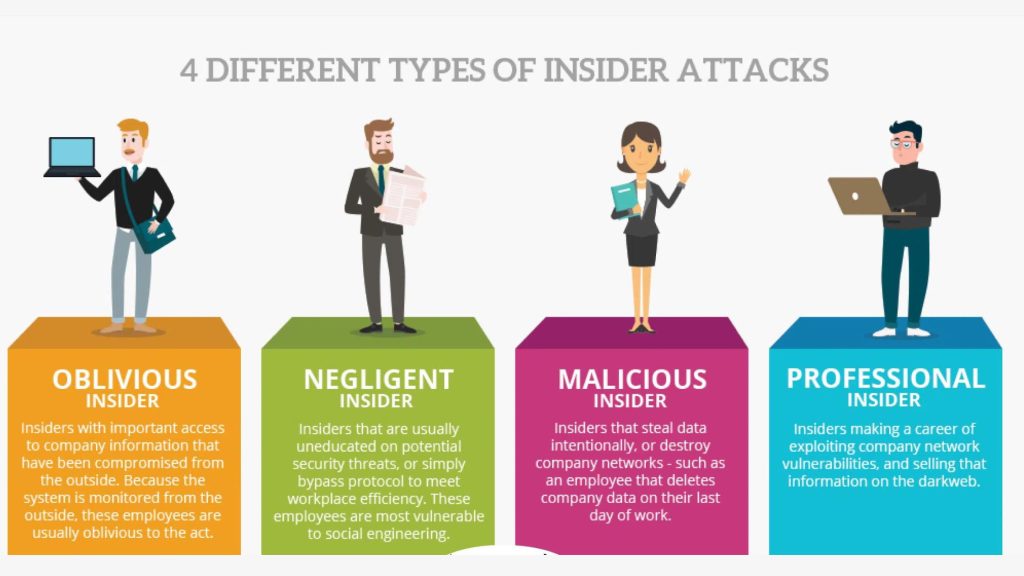
Posted On Jun 06 2024 | 17:52
AI and ML are being used on both sides of the cybersecurity battle. On the defense side, AI can analyze vast amounts of data to identify and respond to threats faster and more accurately. On the offense side, attackers are developing AI-powered tools to bypass security measures. This creates a continuous arms race, where security researchers need to stay ahead of the curve.
Internal threats, particularly from employees, can pose significant risks to the security and success of your business. These threats can range from unauthorized access to sensitive information, embezzlement, or misuse of company resources. Understanding the nature of these threats is crucial in developing effective strategies to mitigate them.
To address internal threats effectively, businesses need to adopt a proactive approach that combines technology, policies, and employee awareness. At People Tech Group, we help you recognize the potential risks posed by insiders so organizations can take steps to safeguard their assets and operations.
The consequences of internal threats can be far-reaching and devastating for businesses of all sizes. Beyond the immediate financial impact, internal breaches can result in long-term damage to a company’s reputation and customer trust. Moreover, regulatory penalties and legal liabilities can further compound the costs associated with internal security incidents.
In addition to the direct financial implications, internal threats can disrupt business operations, leading to downtime, loss of productivity, and potential data loss. The ripple effects of a security breach can extend beyond the affected organization, affecting partners, customers, and other stakeholders. Therefore, it is essential for businesses to prioritize internal security measures to protect their interests and ensure continuity.
By understanding the potential impact of internal threats, organizations can better appreciate the importance of investing in robust security practices and fostering a culture of vigilance among employees.

Internal threats from employees can manifest in various forms, each presenting unique challenges to business security. One common type of internal threat is unauthorized access, where employees abuse their privileges to gain entry to confidential information or systems. This can result in data breaches, intellectual property theft, or sabotage of critical infrastructure.
Another prevalent internal threat is the misuse of company resources, such as using corporate devices for personal gain or engaging in activities that compromise network security. Employees may also inadvertently introduce malware or other threats through negligent behavior, posing a risk to the organization’s overall security posture.
Moreover, malicious insiders, individuals who intentionally seek to harm the organization, represent a particularly insidious threat. These employees may engage in activities such as fraud, data manipulation, or espionage, leveraging their insider knowledge to evade detection and carry out their nefarious deeds.
Detecting internal threats early is essential for minimizing their impact and preventing serious security incidents. There are several signs that organizations can watch out for to identify potential insider threats among employees. Changes in behavior, such as sudden displays of wealth or unexplained financial difficulties, could indicate that an employee is engaging in fraudulent activities.
Additionally, employees who exhibit loyalty or commitment to the organization, display disgruntled behavior, or express grievances without resolution may be at higher risk of becoming insider threats. Unusual patterns of access to sensitive information, unauthorized attempts to bypass security controls, or suspicious network activity should also raise red flags and prompt further investigation.
By training employees and security personnel to recognize these warning signs, organizations can strengthen their ability to detect and respond to internal threats in a timely manner.
Internal threats from employees pose a significant risk to the security and stability of businesses. By understanding the nature of these threats, recognizing the signs of insider misconduct, and implementing robust security measures, organizations can minimize the risks associated with internal security incidents. From establishing access controls and educating employees to fostering a culture of security awareness, businesses can proactively safeguard their assets and operations against internal threats.
By taking a proactive approach to internal security, businesses can protect their reputation, financial interests, and competitive advantage in an increasingly complex threat landscape. Investing in internal threat prevention measures is not only a sound business decision but a critical step towards ensuring the long-term success and resilience of your organization. Talk to our experts to find out how we can help you with our cybersecurity services.
